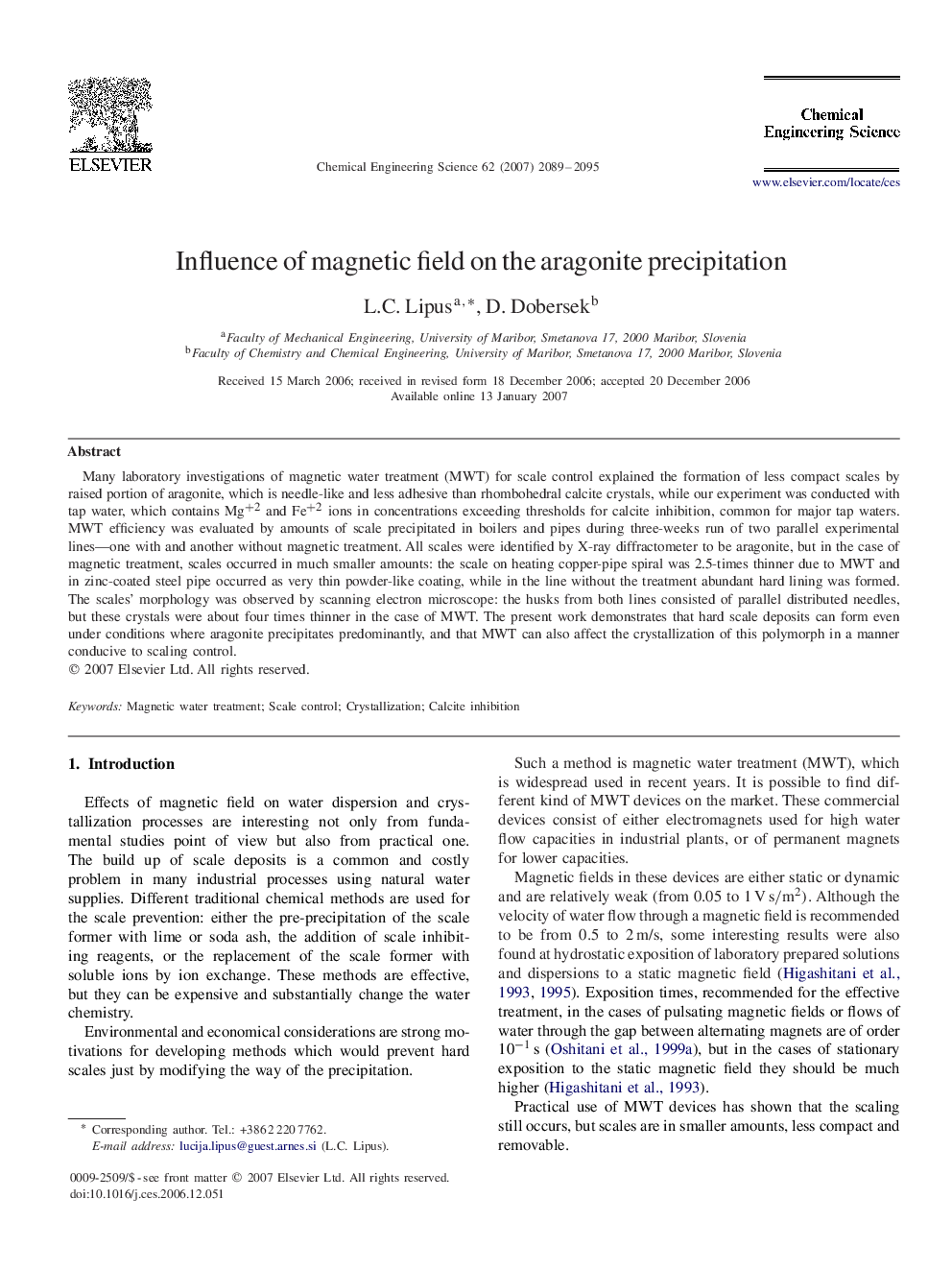| Article ID | Journal | Published Year | Pages | File Type |
|---|---|---|---|---|
| 160196 | Chemical Engineering Science | 2007 | 7 Pages |
Many laboratory investigations of magnetic water treatment (MWT) for scale control explained the formation of less compact scales by raised portion of aragonite, which is needle-like and less adhesive than rhombohedral calcite crystals, while our experiment was conducted with tap water, which contains Mg+2Mg+2 and Fe+2Fe+2 ions in concentrations exceeding thresholds for calcite inhibition, common for major tap waters. MWT efficiency was evaluated by amounts of scale precipitated in boilers and pipes during three-weeks run of two parallel experimental lines—one with and another without magnetic treatment. All scales were identified by X-ray diffractometer to be aragonite, but in the case of magnetic treatment, scales occurred in much smaller amounts: the scale on heating copper-pipe spiral was 2.5-times thinner due to MWT and in zinc-coated steel pipe occurred as very thin powder-like coating, while in the line without the treatment abundant hard lining was formed. The scales’ morphology was observed by scanning electron microscope: the husks from both lines consisted of parallel distributed needles, but these crystals were about four times thinner in the case of MWT. The present work demonstrates that hard scale deposits can form even under conditions where aragonite precipitates predominantly, and that MWT can also affect the crystallization of this polymorph in a manner conducive to scaling control.
